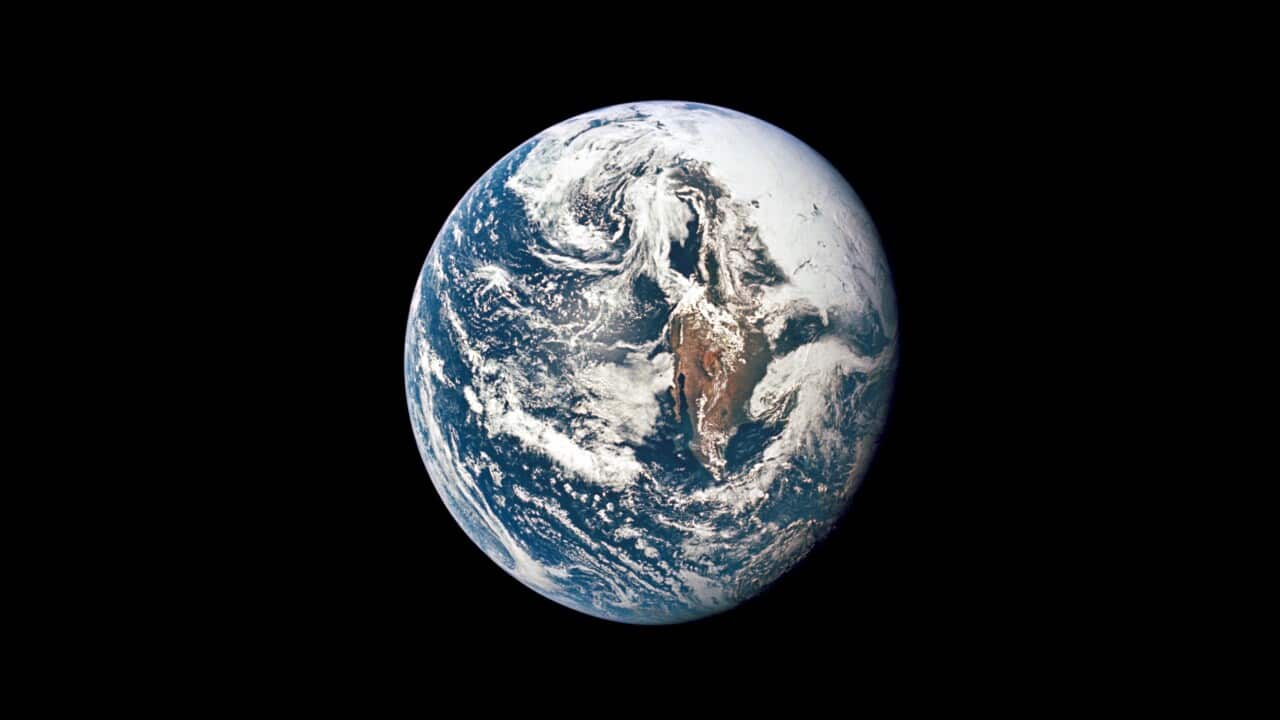Key Points
- The calculated likelihood of the asteroid hitting Earth has increased since first being detected in 2024.
- While it could hit Earth on 22 December 2032, it is most likely to pass by without making contact.
- NASA is monitoring the asteroid but in April it will become too faint to observe again until mid 2028.
NASA says an asteroid heading towards Earth has a greater chance of impact than first thought.
The United States-based space administration body had initially estimated a more than 1 per cent chance of the asteroid hitting Earth in 2032.
It now says the chance is more than 2 per cent.
Detection of Asteroid 2024 YR4
Detected in the last week of December 2024, the minor planet has been called Asteroid 2024 YR4, and if it were to hit Earth, it would do so on 22 December 2032.
While there is more than a 97 per cent chance it will not hit the Earth, NASA has said: "Currently, no other known large asteroids have an impact probability above one per cent."
Earlier this month, NASA released a statement that said the chance of the asteroid hitting Earth was 2.3 per cent.
"As more observations of the asteroid’s orbit are obtained, its impact probability will become better known," it said and added that it is "possible its impact probability will continue to rise".
"Ongoing observations from ground-based telescopes involved with the International Asteroid Warning Network will continue while the asteroid is still visible through April, after which it will be too faint to observe until around June 2028," NASA's statement read.
One of the highest-level asteroid warnings
Tamara Davis, an astrophysics professor at The University of Queensland, told SBS News this asteroid had been given "the second highest warning scale that we've ever had in our alert system for asteroids that might impact Earth".
"It feels like science fiction, but this is science fiction in real life; asteroid impacts are a genuine concern.
"We know that they can have quite destructive effects," she said, pointing to the widely accepted theory that an asteroid wiped out dinosaurs.
"We've also seen some more recently, that caused breaking glass and shock waves as it came through."
How big is Asteroid 2024 YR4?
Davis said: "The one that we're talking about now is much bigger than that one and is going to pass. They expect it to pass close to Earth, maybe closer than the moon, is its current expected sort of direction and there is a slight chance that it will hit us."
She described Asteroid 2024 YR4 as "a serious-sized object".
"We are talking 40 to 90 metres is the estimate … and that's quite sizeable for an asteroid."
"If it was to hit [Earth], it would have the potential to wipe out something the size of a city, it could do significant damage."
Davis said the chances of the asteroid hitting a populated part of Earth were much lower than the 2.3 per cent chance of it hitting the planet in the first place.
"Most of the Earth is not city, so the likelihood that it would actually hit Earth and pinpoint precise enough to hit somewhere where there's a major population centre is pretty low, so that is reassuring."
However, if there is a collision, there is potential for huge damage.
Where on Earth?
Davis said at this stage, it was too early to tell exactly when and where the asteroid might strike the Earth.
"We still are uncertain within half a day exactly when it would hit."
She said as the asteroid moved closer, such forecasts may be able to be refined.
"Typically, they'll end up with a stripe across the earth, which is sort of the region of danger and that's the area that we could warn people if we thought something dangerous was actually going to hit," Davis said.
At the same time, NASA has also pointed out that "several" other objects with a "probability of impacting Earth" had been on its asteroid risk list in the past before they were recategorised as having zero risk.
Planetary defence
The NASA-funded Asteroid Terrestrial-impact Last Alert System station in Chile detected and reported Asteroid 2024 YR4.
Davis said the "first step of planetary defence is to watch".
She said while human capability to map what is in the sky has improved dramatically in recent history, there was always a chance that an asteroid could make it close to Earth without being detected.
"We could definitely still be completely blindsided," she said.
Diverting asteroids
Davis said if an asteroid was detected early enough, "we can give it a tiny little nudge … and that'll make it drift far enough away that it will avoid it hitting us".

NASA Double Asteroid Redirection Test (DART) space probe took place in 2022 to study the effect of an impact with near-Earth objects. Source: Getty / All About Space Magazine/Future Publishing
"It took a spaceship up, a satellite up, it fired something at an asteroid and tried to change its path and so this was just a practice, like a demonstration of a way that we can deflect an asteroid."




